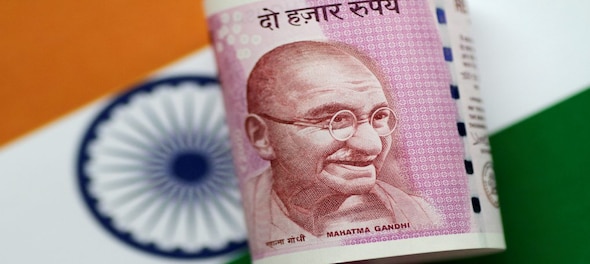
The RBI deputy governor has recently made a case for India floating the rupee (INR) so that it finds its level based on demand and supply for it. His suggestion comes as the RBI pumping in as much as $114 billion to prop up the INR couldn’t stem the rot.
RBI has several mandates. Two of them are inflation control and managing the forex reserves, a subset of which is righting the value of INR through deft tightrope walking consisting of sterilisation operations.
When the INR slides too much against the dollar — making imports expensive — RBI pumps in dollars, i.e., sells dollars, thereby increasing its supply and stemming the fall of the INR. In the process, it succeeds in sucking out the rupee in circulation pro tanto, stemming inflation as well. RBI moves in the reverse direction when the INR appreciates too much against the dollar, thereby discouraging exports.
The burden of the RBI deputy governor’s song was if, despite releasing as much as 20 percent of forex reserves, the INR was getting battered, it could well be left to float freely in the international markets.
The deputy governor had a point but perhaps was oversimplifying things.
INR is fully convertible on the current account, i.e., foreign trade by Indian residents can be conducted in any currency. But it is not fully convertible on a capital account. Indian firms, however, enjoy partial capital account convertibility by being empowered to float their shares abroad through Global Depository Receipts (GDR) or its American equivalent ADR. An American can sell the GDRs on the BSE if he finds that there is an arbitrage opportunity by converting the GDR into shares and getting paid in INR.
Also Read: View | Not just China plus one, the world needs a dollar plus two, if not three, strategy
When we embrace full convertibility, as canvassed by the RBI deputy governor, anyone can do pretty much what she pleases. Suppose one has Rs 10 lakh in her savings bank account. She can ask her bank to hold Rs 5 lakh in INR and the remaining in greenback, Euro, Japanese Yen, or any other combination. Banks’ stranglehold over the currency market would reduce.
Right now, Indian banks dealing in forex enjoy enormous spreads — sell a dollar for Rs 80 but buy the same dollar for Rs 84, in a manner of heads I win, tails you lose. The difference between the bid and ask rates is called the spread, which is Rs 4 in the given example. This would end because price discovery would be much better in an open and free market.
The worry could be that Indian residents might dump the INR in favour of the greenback. The primary reason for the US dollar outperforming all the currencies is its heightened demand, thanks to its international reserve currency status. Should that happen, INR could be further mauled.
So, the Indian government is right in adopting a calibrated approach to full capital account convertibility and not precipitating matters by plunging headlong into full convertibility in a sudden rush of blood.
While full capital account convertibility of INR is in the realm of rational discussion, what AAP chief Arvind Kejriwal has mooted to shore up the value of INR is completely irrational. Embossing the images of God Ganesh and Goddess Lakshmi, according to him, would prop up the Indian economy as well as its currency.
In an atmosphere surcharged with religious emotion on the back of the upcoming Assembly elections, it is designed to appeal to voters’ sentiments and proclivities but clearly has no economic rationale.
Chinese Yuan became stronger vis-à-vis the US dollar on the back of China’s phenomenal export earnings and FDI inflows. However, it is another matter that the Chinese government has been following a conscious policy of undervalued Yuan to incentivise exporters who get more of the domestic currency for every dollar of export.
If India wants INR to be stronger, it has to strengthen its economy, with exports outstripping imports and India becoming a manufacturing hub attracting huge FDIs. That is a long way off. Therefore, it is a trifle premature to float the INR. All the more so when China is yet to take the plunge.
Probably besides waiting for the Indian economy to strengthen, the Indian government should also wait for the greenback’s fortuitous lucky streak to end, which might happen when nations of the world break free of dollar dependency. Incidentally, the greenback’s overvaluation may not be such a good thing for its exports.
Read his other columns here.
First Published: Oct 30, 2022 8:42 AM IST
Check out our in-depth Market Coverage, Business News & get real-time Stock Market Updates on CNBC-TV18. Also, Watch our channels CNBC-TV18, CNBC Awaaz and CNBC Bajar Live on-the-go!


Why Priyanka Gandhi Vadra chose bypoll over poll
Jun 19, 2024 1:15 PM
Priyanka Gandhi — Congress strategist, campaigner, crisis manager, says expert
Jun 18, 2024 8:22 PM
EVM row: Meet Ravindra Waikar, Shiv Sena MP at the centre of controversy
Jun 17, 2024 1:26 PM
EVM unlocking controversy in Mumbai North West Lok Sabha seat — What we know so far
Jun 17, 2024 10:25 AM

